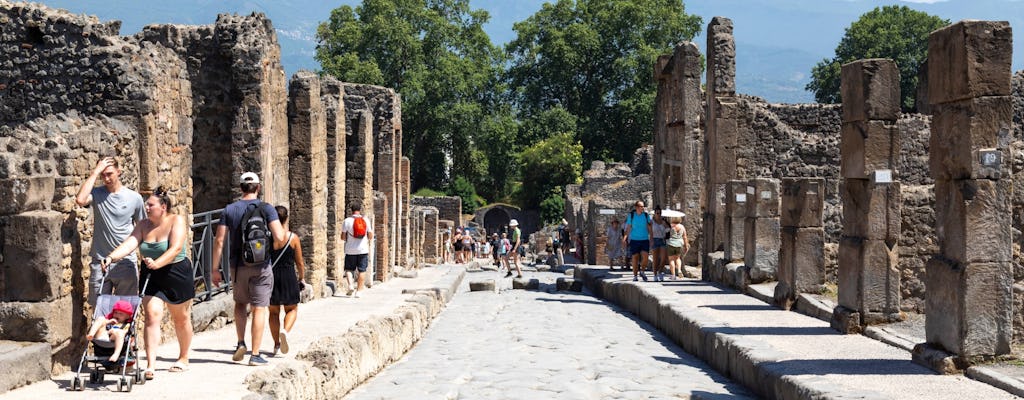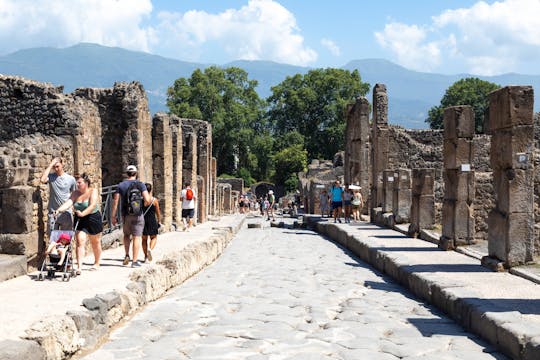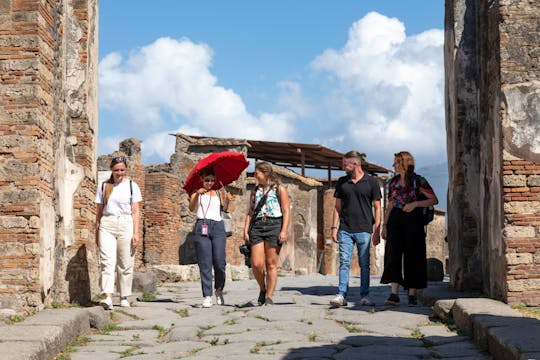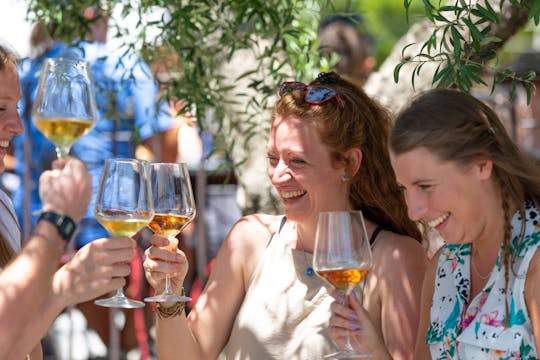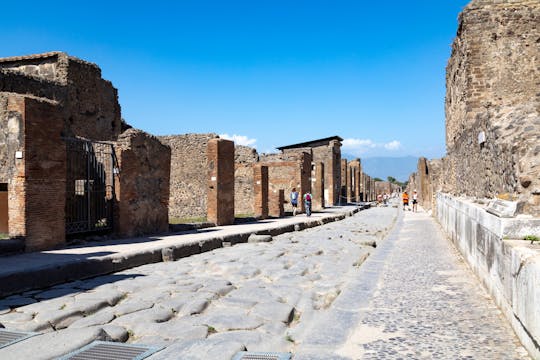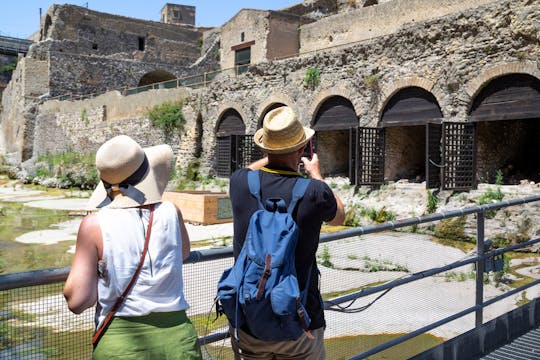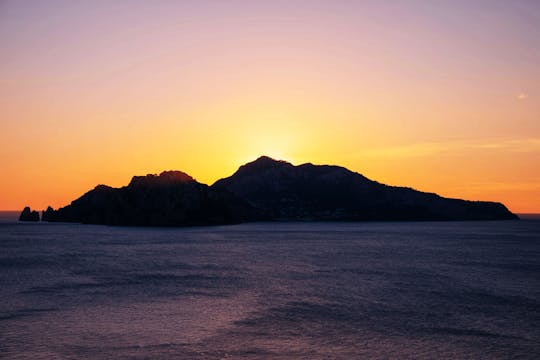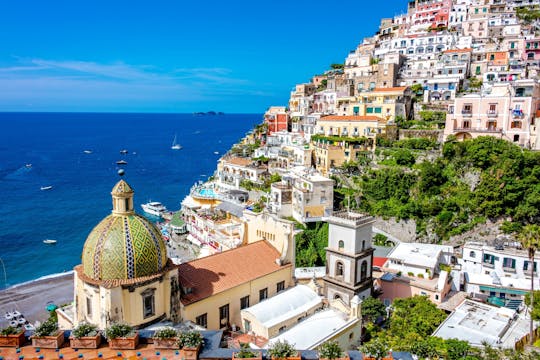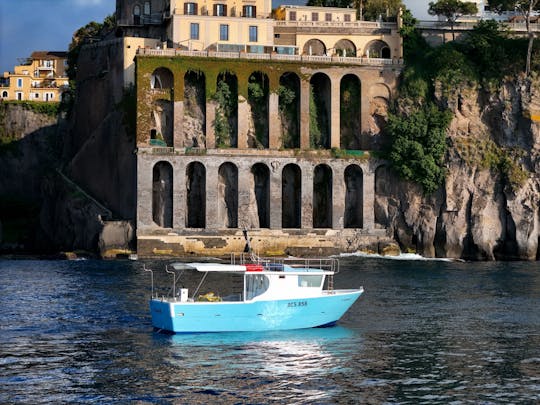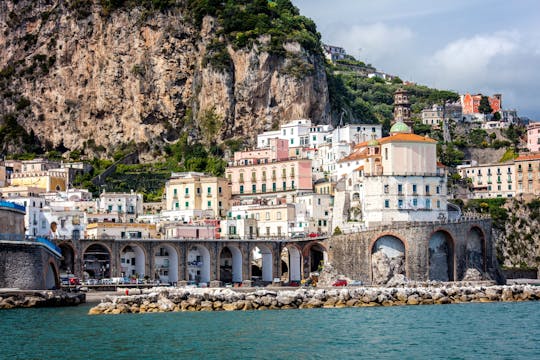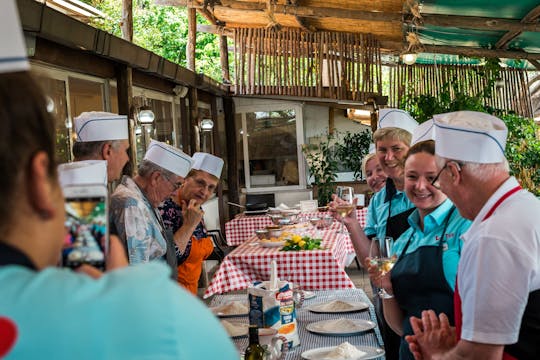Visites très bien. Je trouve qu'avec la technologie actuelle, des traducteurs adaptés seraient nettement mieux.Tout le monde ne comprend oas l'anglais . J'ai déjà pu profiter d'un traducteur ( oreillette) en Espagne notamment. C'est quand même mieux. Surtout quand le guide nous propose de descendre voir les squelettes., ne nous accompagne pas et qu on n'a pas compris qu'il fallait tout remonter. Lunch basique, 10 accras pour 4(?), pas de pain. Sinon, Martina très bien.
When Mount Vesuvius erupted in 79 AD, the sister cities of Pompeii and Herculaneum were frozen in time. More than 1,600 years passed before they were rediscovered, and today they're undoubtedly two of the world's greatest archaeological sites. Andrea, one of our expert local guides, says, ‘Pompeii and Herculaneum may have shared the same fate under the ashes of Mount Vesuvius, but they offer two distinct glimpses into ancient Roman life. While Pompeii was a bustling commercial centre, Herculaneum was a refined seaside retreat for the wealthy.'
Buried by volcanic debris, these UNESCO-listed sites offer a fascinating and at times haunting insight into ancient Roman life. First up, your guide will lead you through the streets of Pompeii and show you the richly decorated villas of the Roman upper classes as well as public spaces such as the Forum. See the remains of temples and villas and stroll along cobbled streets still rutted from Roman carts.
Then, after lunch, we'll head to the archaeological site of Herculaneum. Andrea says, ‘Walking through Pompeii is like stepping into a busy city of the past, with its grand public buildings and lively streets, while exploring Herculaneum feels like strolling through a luxurious private estate, with lavish villas and intricate mosaics, boat houses and marble floors.' Following your guide through the ancient town, you'll learn about the tragic demise of Herculaneum, destroyed by a fast-moving pyroclastic flow of hot gas and volcanic mud.
